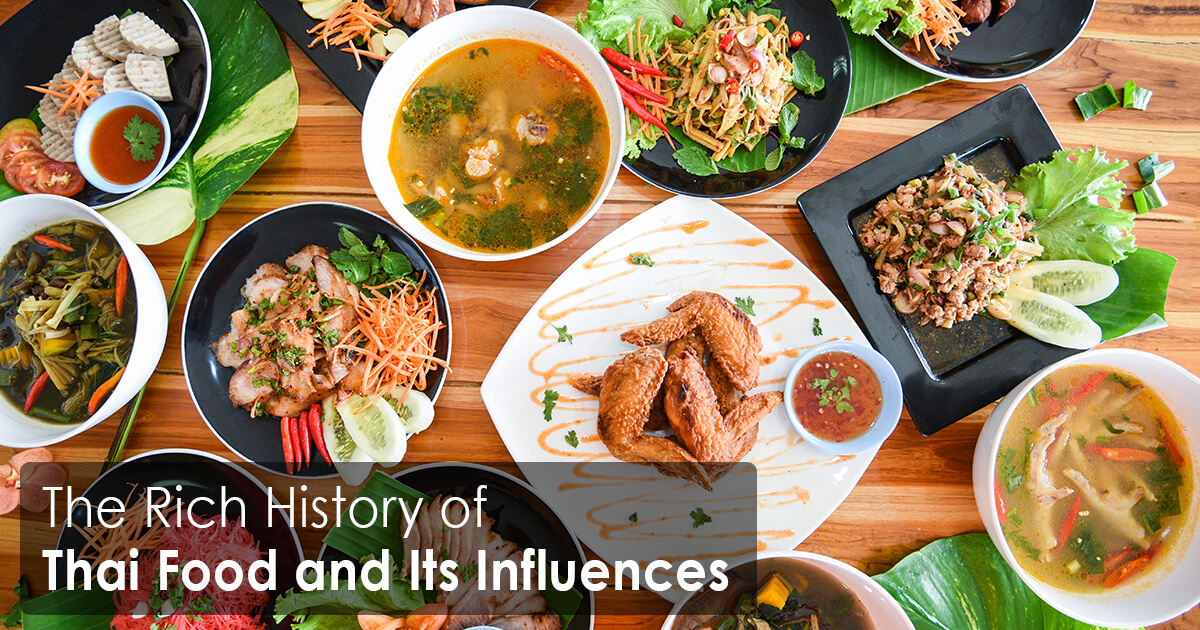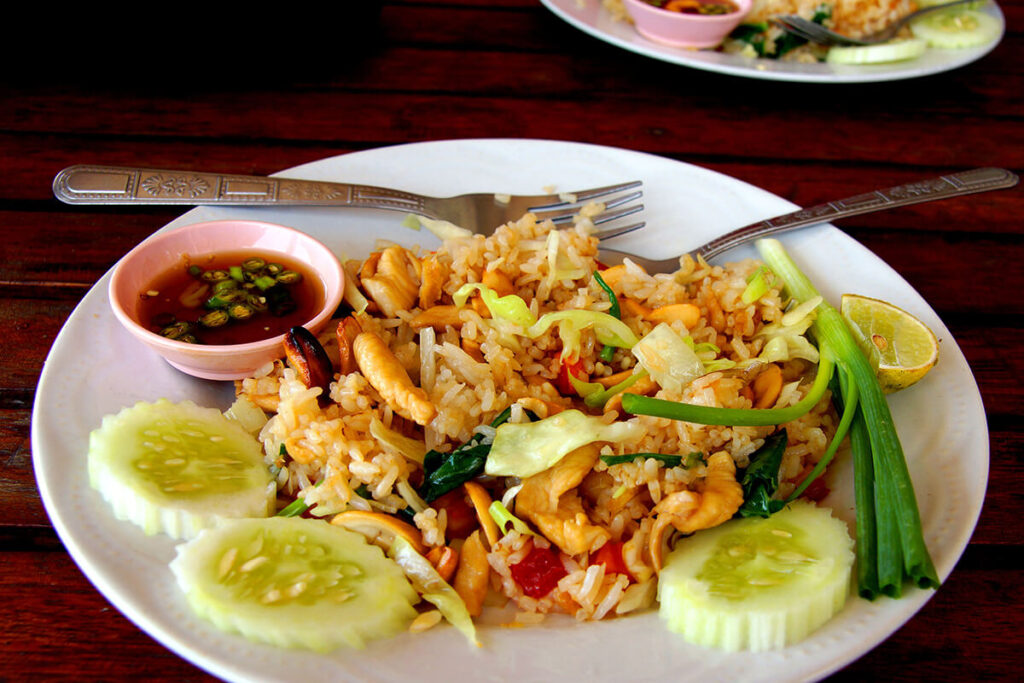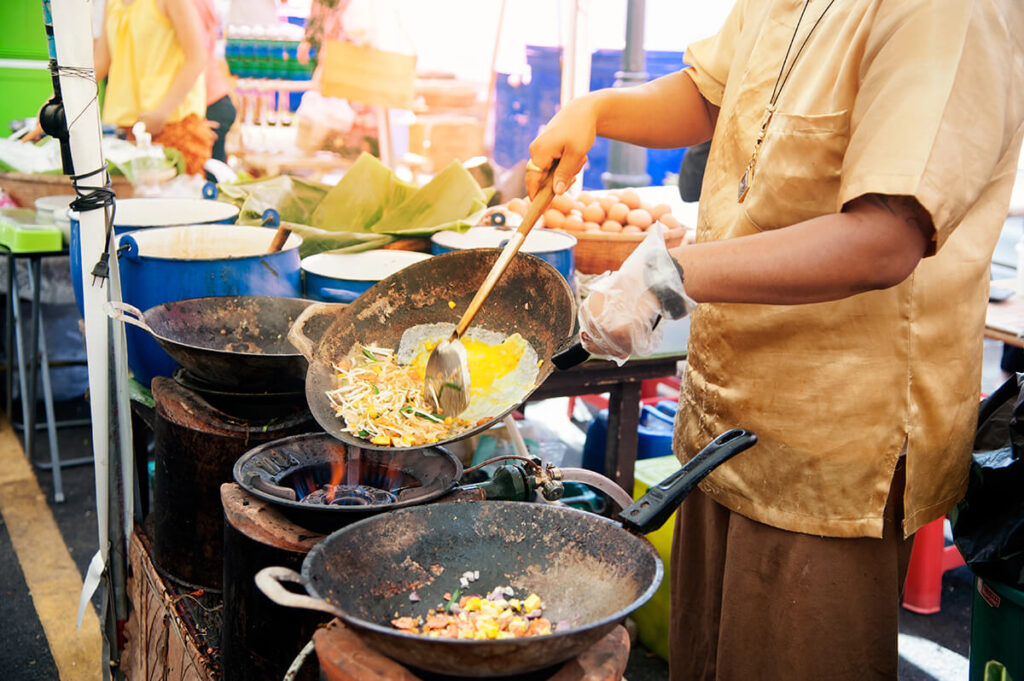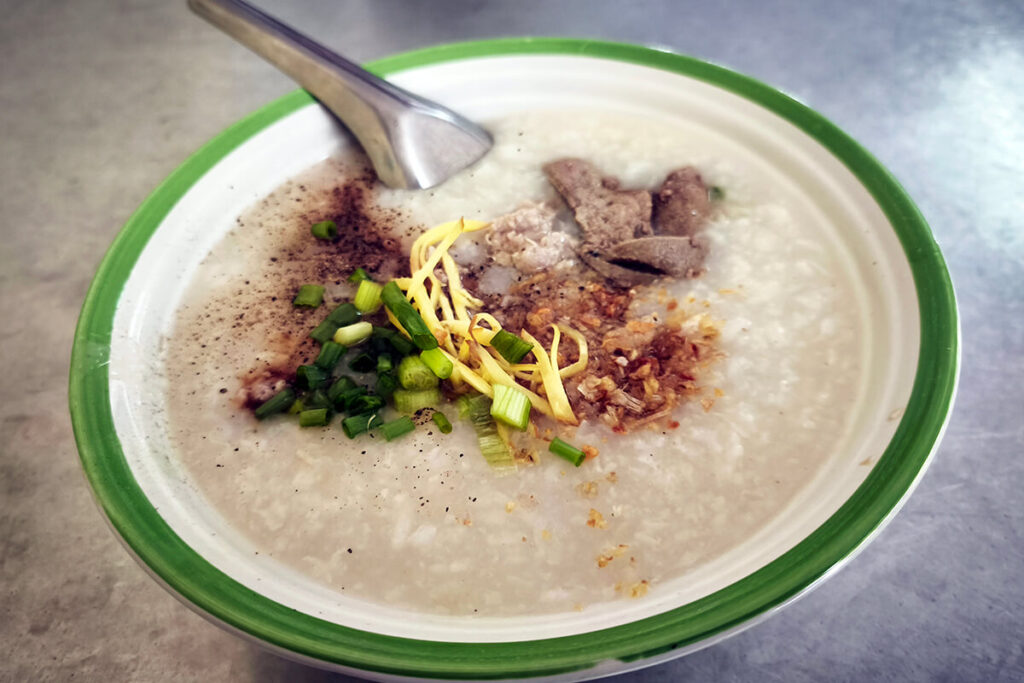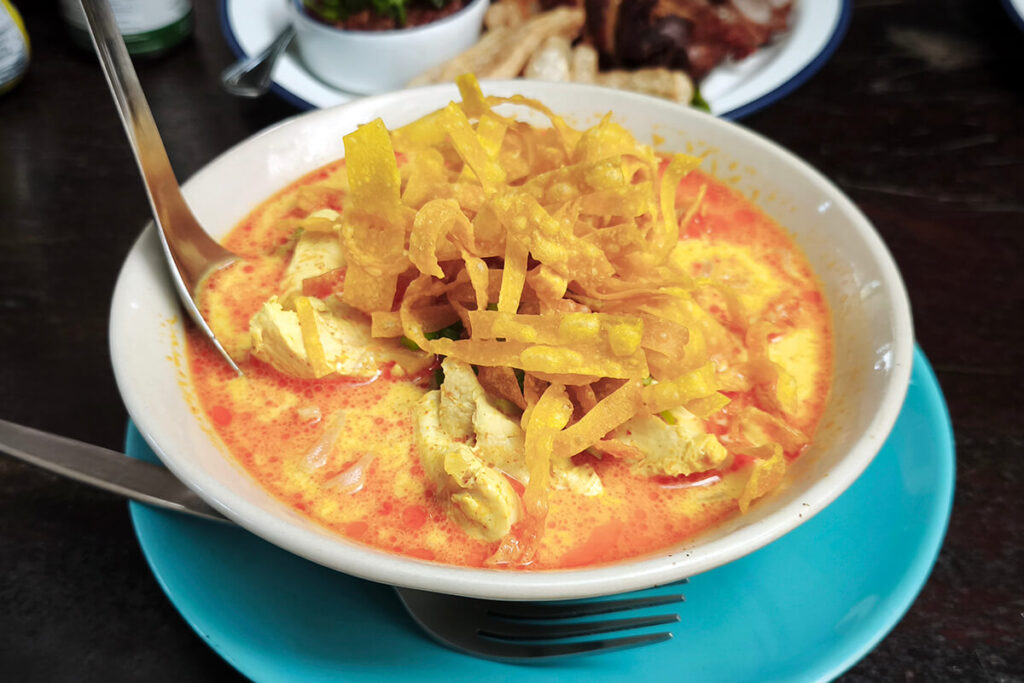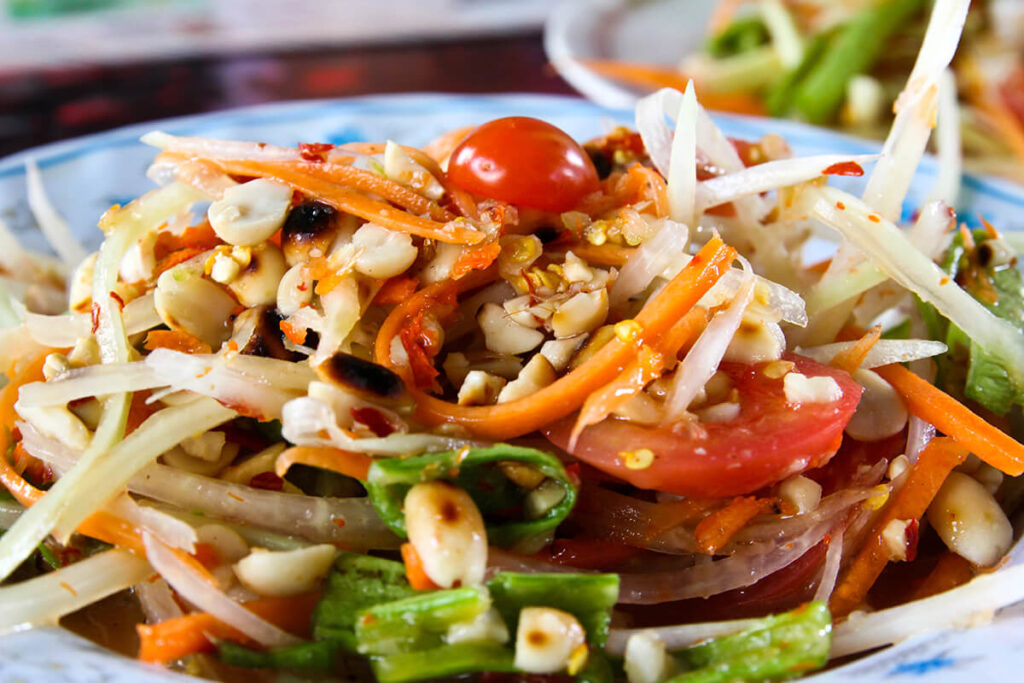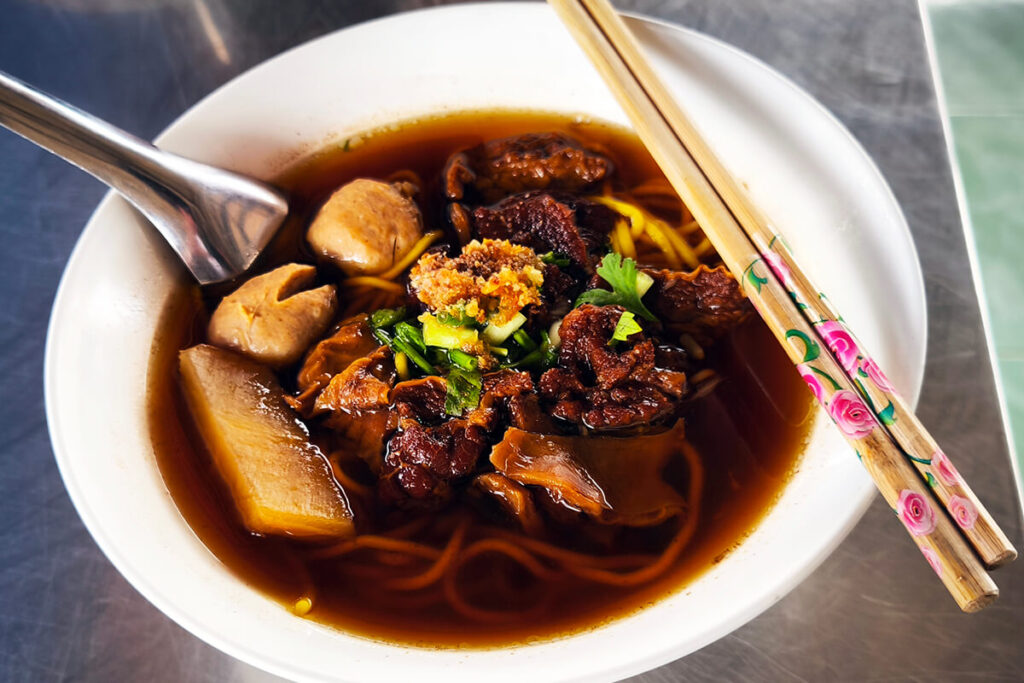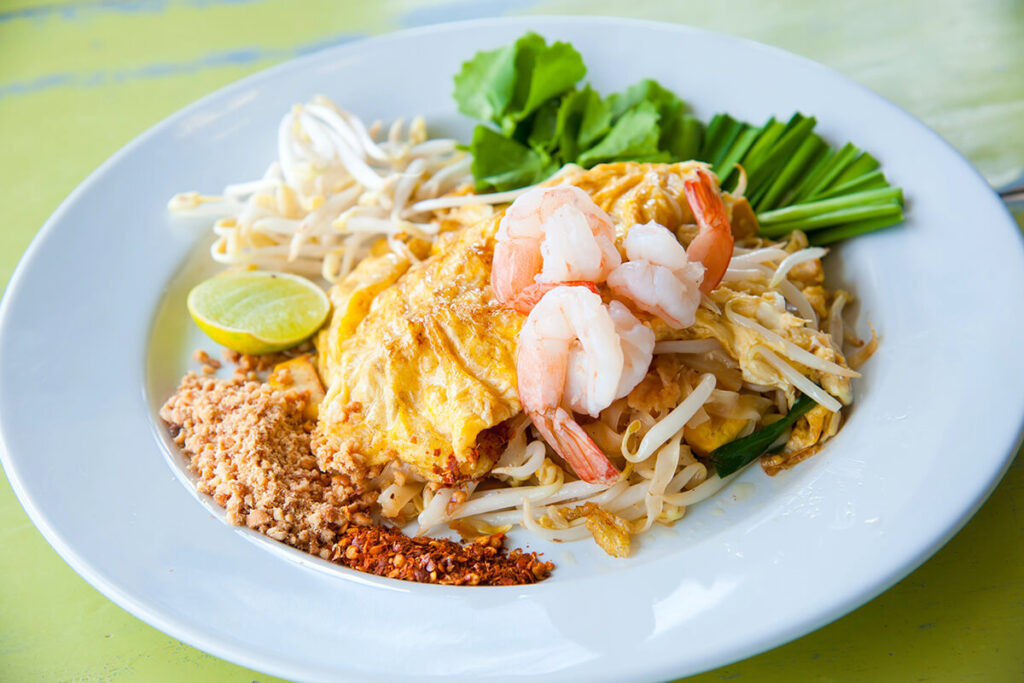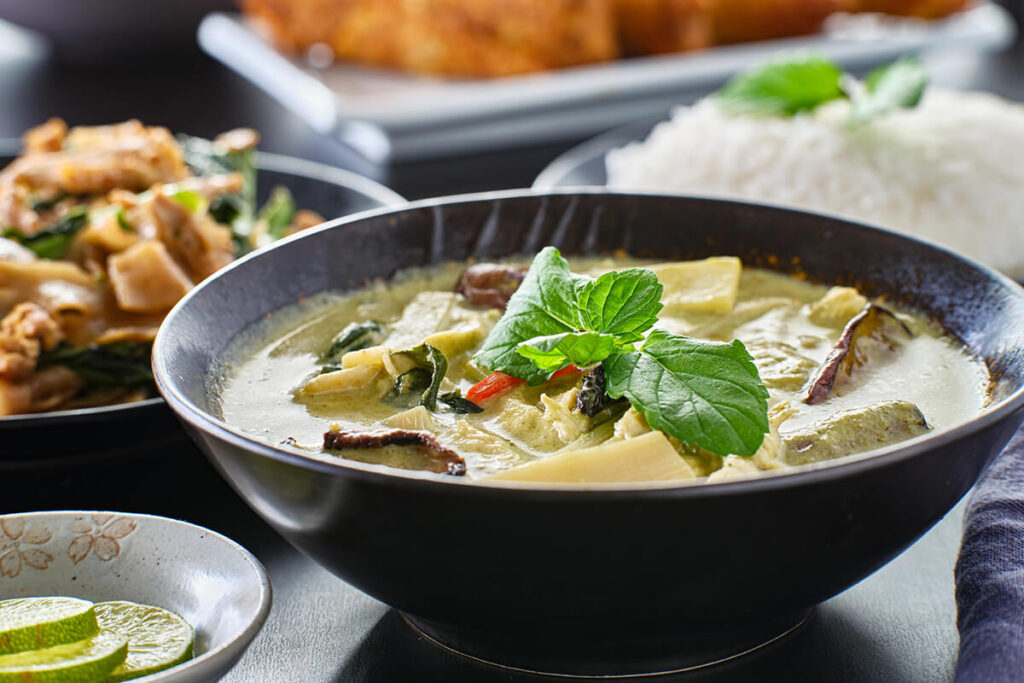Thailand is a country renowned for its vibrant culture, stunning landscapes, and warm hospitality and also boasts a rich culinary heritage that is celebrated worldwide. Thai cuisine is a harmonious blend of flavours, textures, and aromas that reflects the country’s diverse history and its interactions with neighbouring nations and global traders. To truly appreciate the complexity and uniqueness of Thai food, one must discuss its historical roots and the myriad influences that have shaped it over centuries.
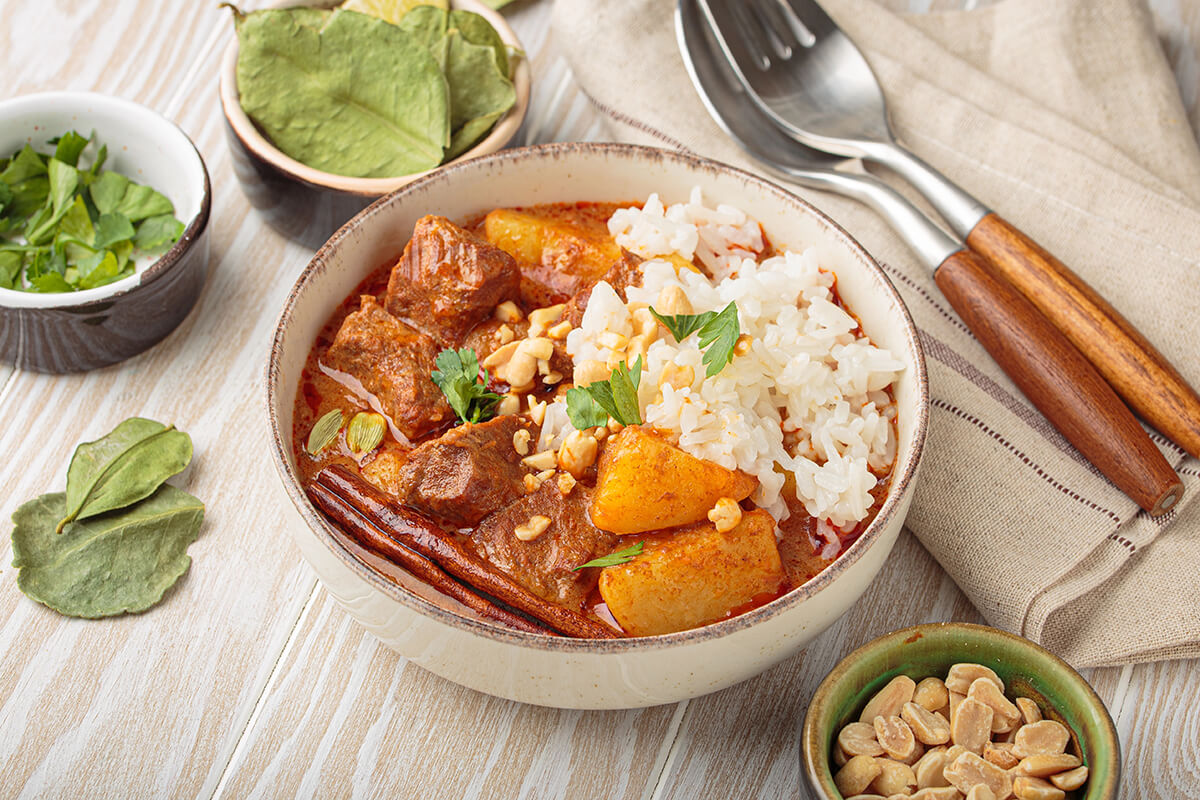
Origins of Thai Cuisine
Thai cuisine’s roots date back thousands of years, with evidence suggesting that the earliest forms of cooking in the region appeared during the Dvaravati period (6th to 11th centuries). Initially, the culinary practices were simple—utilizing locally available ingredients like rice, herbs, and freshwater fish. Over time, cooking techniques became more refined, influenced by climatic conditions, agriculture, and cultural exchanges.
The Kingdom of Sukhothai (13th to 15th centuries), often regarded as the cradle of Thai culture, helped establish many culinary traditions still prevalent today. The development of rice cultivation, particularly jasmine rice, became central to Thai cuisine, shaping its emphasis on rice as a staple food.
The Influence of Ancient civilisations and Trade
One of the most significant factors in the evolution of Thai cuisine was its position at the crossroads of major trade routes. This facilitated exchanges with India, China, Persia, and beyond, introducing new ingredients, spices, and culinary techniques.
Indian Influence
Ancient India played a pivotal role in shaping Thai cuisine, particularly in the realm of flavour profiles, religious practices, and culinary techniques. Buddhism’s spread from India introduced vegetarian dishes and the concept of balancing flavours, especially the harmony of sweet, sour, salty, bitter, and umami.
Indian influence is evident in the use of curry powders, coconut milk, and ingredients like turmeric, cardamom, and cumin. Dishes such as Massaman curry reflect Indian culinary traditions, combining spices, slow-cooked meats, and peanuts, which are believed to have been introduced through Indian traders.
Chinese Influence
Chinese migration to Thailand, particularly during the Tang and Ming dynasties, brought a significant influence on Thai food. The Chinese introduced stir-frying, noodle dishes, and the use of soy sauce, ginger, and garlic.
Chinese immigrants established vibrant communities in major Thai cities like Bangkok and Chiang Mai, contributing to street food culture. Dishes like rad na (stir-fried noodles), wonton soup, and dim sum have become integral parts of Thai cuisine.
The Chinese also influenced Thai culinary techniques, such as wok cooking and steaming, which enhanced the variety and diversity of Thai food.
The Role of Southeast Asian Countries
As a member of Southeast Asia, interactions with neighbouring countries such as Laos, Cambodia, and Myanmar shaped Thailand’s culinary landscape.
Lao and Isan Influences
The northeastern region of Thailand, known as Isan, shares a close cultural and culinary heritage with Laos. The use of fermented fish (pla ra), sticky rice, grilled meats, and spicy salads (som tam) is characteristic of both cuisines. These dishes reflect the agricultural practices and climate of the region.
Cambodian and Vietnamese Impact
Traditional Thai cuisine also absorbed elements from Cambodian and Vietnamese food, such as the use of lemongrass, galangal, and fresh herbs. Sharing ingredients and cooking styles is common across the region, contributing to the diversity of Thai flavours.

The Age of European Contact and Colonial Influence
European contact with Thailand (formerly Siam) was limited compared to other Southeast Asian nations, as Thailand maintained its independence during the colonial period. However, European influence still impacted Thai cuisine, especially during the 16th and 17th centuries.
Portuguese and Dutch traders introduced new ingredients like chillies (which became a hallmark of Thai food), tomatoes, and potatoes. Chillies, originally from the Americas, became integral in creating the famous spicy profiles of Thai dishes such as green curry and papaya salad.
Modern influence and globalisation
In the 19th and 20th centuries, Thailand opened up to international trade and tourism, further enriching its culinary landscape. Western cuisines, notably French, Japanese, and American, began to influence Thai cooking styles and dishes.
Thai Food Today: A Reflection of Its History
Modern Thai cuisine is an amalgamation of these historical influences, combined with local ingredients and traditional techniques. The balance of sweet, sour, salty, bitter, and spicy flavours remains central to Thai dishes, a philosophy rooted in ancient culinary principles.
Signature dishes like Pad Thai, Tom Yum Goong (spicy shrimp soup), Green Curry, and Som Tam show how different cultures have influenced Thai food. For example, Indian spices, Chinese stir-fry techniques, native herbs, and fermentation practices have all had an impact.

The Future of Thai Cuisine
As Thai food continues to gain international popularity, chefs and food enthusiasts worldwide explore and reinterpret traditional recipes, blending them with global culinary techniques to create new dishes.
If you’re interested in trying additional local Thai dishes during your travels in the South, especially on Koh Samui, click here to discover how to eat like a local.

